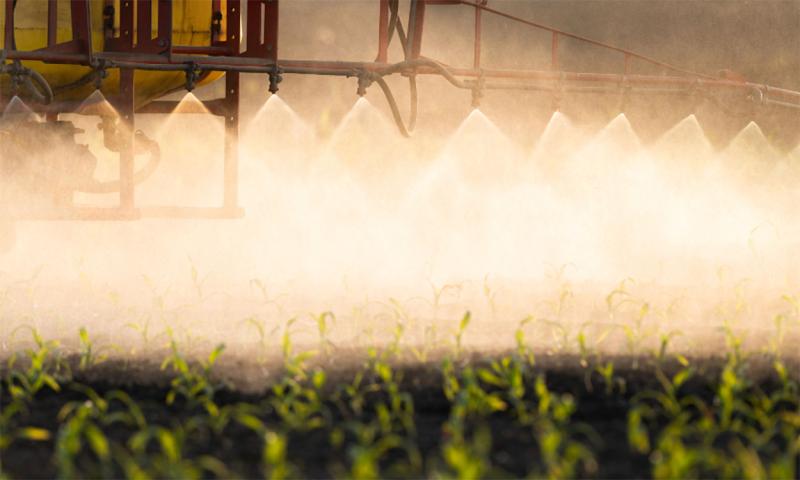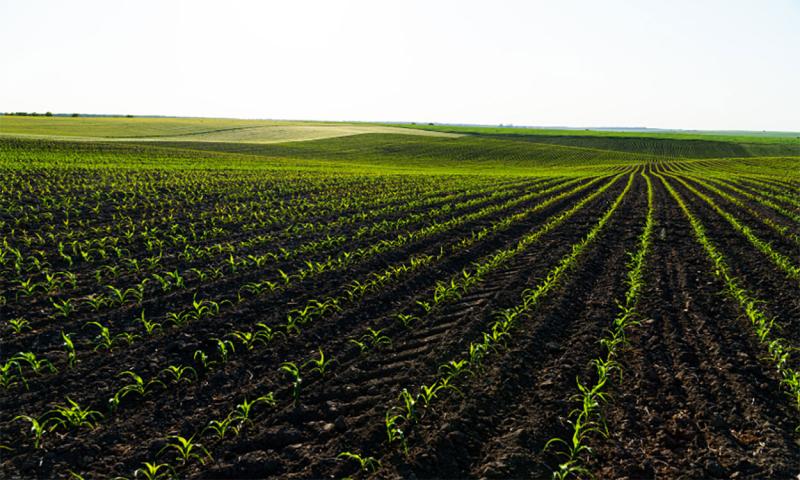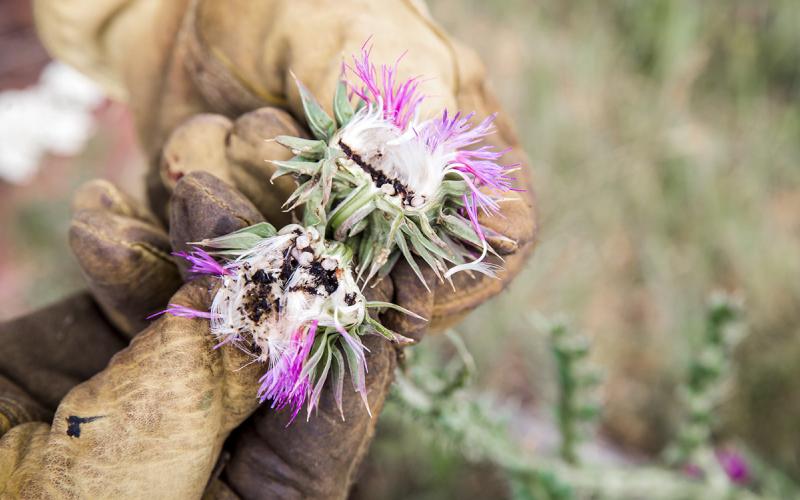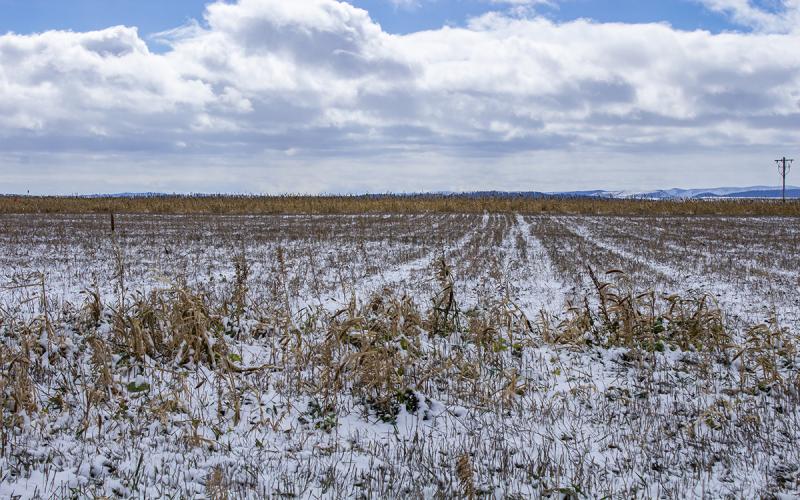Written collaboratively by Eric Jones, Philip Rozeboom, Jill Alms, and David Vos.
Corn planting, albeit delayed, is largely complete across South Dakota. Managing weeds after emergence is important to protect the yield potential of the corn crop. While many farmers apply a preemergence herbicide, the need for a postemergence herbicide application is likely. Below are considerations to remember before making the postemergence herbicide application.
Application Timing

While many farmers realize the need for and importance of a strong preemergence herbicide program in corn, some herbicides were not applied to some fields due to wind and/or rain. While weed management is very important, getting the seed in the ground should take precedence, especially in corn. Since there are many products that have soil residual activity that can be applied in corn, the fields that did not receive a preemergence herbicide application should be treated at early postemergence timing (approximately V2 stage). While early postemergence applications should not be relied on solely, managing small weeds and later-emerging weeds early may buy time until the corn canopy closes. Be sure to scout fields and determine if another postemergence application is needed.
Herbicide Selection
Weed management with herbicides in corn relies on a few herbicide groups: Group 2 (nicosulfuron [Accent]), Group 5 (atrazine [many]), and Group 27 (mesotrione [Callisto] and tembotrione [Laudis]. For an in-depth look at herbicide groups, view the article, Herbicide Group Classification. These herbicides are effective on many weed species and provide soil residual activity to control later-emerging weeds. Group 15 (acetochlor [Harness] and S-metalochlor [Dual II Magnum]) herbicides do not have postemergence activity, but they are also applied at this timing to control later-emerging weeds. While these herbicides are effective, many weed management programs rely heavily on these herbicide groups, and many of the same herbicides are applied two times in a growing season. Be cautious when continuously applying these herbicide groups each growing season, as this is how herbicide-resistant biotypes of various weed species are selected. Neighboring states have waterhemp resistance to Group 5, 15, and 27 herbicides, and many are multiple-herbicide resistant. Management of these profiles of multiple herbicide-resistant weeds is very difficult and expensive.
While there are glyphosate-resistant weeds (kochia, waterhemp, and giant/common ragweed) in South Dakota, there is still great utility in using this herbicide to manage other weeds. While glufosinate (Liberty, Interline, others) is effective on many different weed species, this herbicide should be saved for use in soybean, where there are fewer effective herbicide groups. However, if you are concerned about recurrently applying the herbicide group and selecting for resistant weeds, there is no problem with applying glufosinate in corn to manage weeds that have been under great selection pressure. 2,4-D and dicamba (Banvel, Clarity, others) (Group 4) can be applied in corn (up to V5 to V8; check specific labels), but these herbicides have been used extensively in soybean varieties that are tolerant to the respective herbicide. Before applying these herbicides, check records of previous applications and think about applications in future growing seasons. While many are experiencing “resistance fatigue” and are sick of hearing about herbicide resistance, weed management is already difficult when there are effective herbicides. Please steward the remaining effective herbicides!
Apply multiple herbicide groups to increase the spectrum of weed control and reduce selection pressure, just be sure to use different herbicide groups in the pre- and postemergence herbicide applications. A more-extensive herbicide list can be found in the latest South Dakota Corn Pest Management Guide.
Environmental Conditions

Postemergence herbicides do not perform well in cool conditions (approximately 50 degrees Fahrenheit or less). While this is usually not a problem for in-season applications, cool temperatures have been common for this growing season, but increased temperatures are eminent. Watch the forecast if cooler mornings/nights are possible. While this growing season has been very wet so far, it is possible for dry conditions to happen before a postemergence herbicide has been applied. Most herbicides will provide reduced control under hot and dry conditions. Similar to crops, weeds are stressed under drought conditions and the processes that herbicides inhibit are not functioning as normal. Spray additives (for example, surfactants and water conditioners) under hot and dry conditions may improve control. If the rain continues, understanding the rainfast period is critical when spraying before a rain shower. The rainfast period is how long the postemergence herbicide needs to remain on the plant before a rain event. The rainfast period changes from herbicide to herbicide, but a good rule of thumb is 4 to 6 hours after application.
Postemergence herbicides should be applied when wind speeds are approximately 5 to 10 miles per hour. Spraying in windy conditions can move the herbicide droplet away from the intended weed target onto off-target crops and plants. While windy conditions are usually a clear indicator not to spray, calm conditions can also be a time not to spray. During calm conditions, a temperature inversion can occur. A temperature inversion is where a layer of warm air is trapped between cooler air higher in the atmosphere and dense, cooler air close to the surface of the earth because of less sunlight intensity. When an herbicide is applied during a temperature inversion, the warm air can trap herbicide droplets above the cool air, and lateral wind can transport the herbicide away from the targeted deposition site. These conditions are usually present before sunrise and after sunset. The Mesonet at SDState provides an online spray tool to determine if an inversion or unfavorable wind conditions are present.


